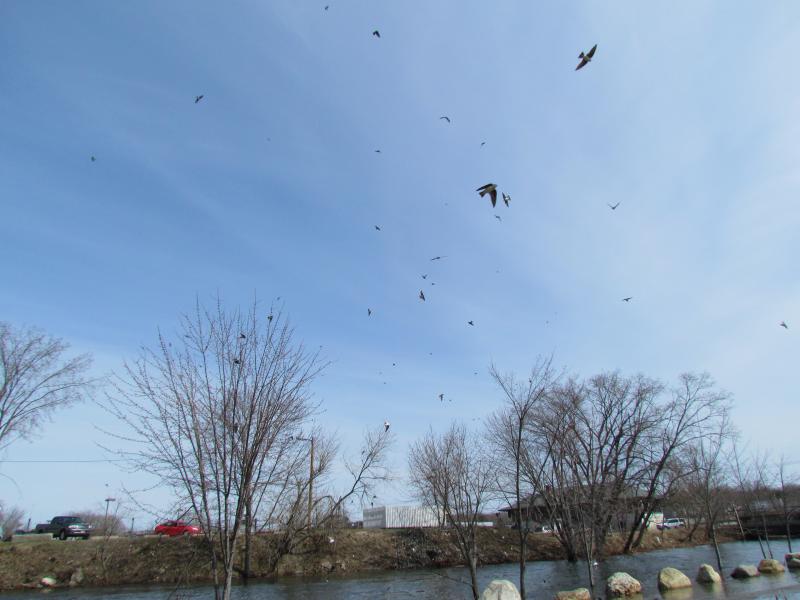Persistently cool, rainy weather in the spring may seem like an inconvenience to us, but it can be a matter of life and death to many birds.
Those that rely largely or exclusively on flying insects are particularly vulnerable. Our use of the term “flying insects” is deliberate because there are some birds that do quite well, even in winter, tracking down insect eggs and larvae.
Woodpeckers, for example, dig under bark and into trees to find insect larvae. Chickadees, nuthatches and brown creepers search the little cracks and crevices of trees and find insect eggs and larvae.
But there are a host of species that feed largely on free-flying insects or newly hatched caterpillars that are active mostly only under warm conditions.
Warblers, flycatchers and swallows are among the insect-eating migrant birds returning here from a winter spent in warm conditions farther south. Cool, wet conditions means that these birds must become very clever about how and where to find insects, or they will die.
We all know of the importance of healthy wetlands and waterways for purifying and storing safe drinking water, providing habitat for fish and waterbirds, and alleviating flooding (among myriad other important roles).
But few people ever consider the crucial role of wetlands and waterways for non-waterbirds and other non-aquatic wildlife. There are many warblers, flycatchers, sparrows, blackbirds and other birds that nest within or near wetland habitats — yellow warblers, palm warblers, alder flycatchers, swamp sparrows and red-winged blackbirds to name a very few. These birds key in on the abundant insect life found in these habitats and typically nest within the wetland area.
In spring, especially in early spring and when the weather stays wet and cool for extended periods, wetlands and waterways become the lifeboats for insect-eating migrant birds. Some can be seen flying up to snap up an insect in the alders and willows along streams, ponds and rivers. You’ll see others flipping leaves or scratching the ground around vernal pools and soggy forested wetlands.
But perhaps the most obvious are the swallows. For swallows in particular, cool and rainy weather can be devastating. Their insect food is all captured in flight, and insects aren’t as likely to fly when it’s cold or damp. If there are going to be insects around in such weather, they will be over a wetland or waterway. Here there can be hatches of multitudes of various kinds of flying insect that lay their eggs in water and move through their immature stages as aquatic creatures.
Migrant swallows in bad weather key in on waterways and wetlands and flocks of hundreds can form as they swoop back and forth in a desperate attempt to scoop as much food out of the air as possible.
Birders from around Maine have been reporting such swallow flocks in recent weeks, most predominately the beautiful, shiny, blue-green-backed tree swallow, but as the season progresses with species like barn swallows and rough-winged swallows mixed in as well. Next time you’re tempted to complain about a cold, soggy spring day, think of the swallows — and keep an eye out for your local wetland “lifeboat” and its “passengers.”





























